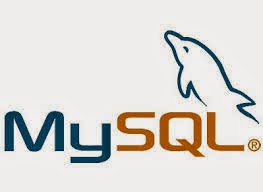Certain technologies play together better than others. PHP, a simple and powerful scripting language, and MySQL, a solid and reliable database server, make a perfect marriage between two modern technologies for building databasedriven, dynamic Web sites. Some of the advantages of both PHP and MySQL are:
•
High performance•
Built-in libraries•
Extensibility•
Relatively low cost•
Portability•
Developer community•
Ease of learningHigh PerformancePHP is no longer considered just a grassroots scripting language, but now with PHP 5, and its highly efficient built-in Zend engine, PHP accommodates developers and IT decision makers in the business trend to rapidly release and update software on the Web faster than conventional programming cycles have allowed.
MySQL, a highly optimized database server, provides the response time and throughput to meet the most demanding applications.With PHP scripts connected to a MySQL database, millions of pages can be served on a single inexpensive server.
Built-In LibrariesPHP comes with many built-in functions addressing common Web development tasks. Problems encountered by other programmers have been solved and packaged into a library of routines, made available to the PHP community. The official PHP Web site at http://www.php.netprovides excellent documentation explaining how to use all of the functions currently available.
ExtensibilityPHP and MySQL are both extensible, meaning that developers around the world are contributing add-on modules to extend the functionality and power of the languages to stay current with the growing market needs and standards of the day. You can also obtain the source code for both PHP and MySQL. Source code is the code that a program consists of before theprogram is compiled; that is, the original building instructions of a program.
Relatively Low CostAs a Web developer you can demand a lot more money for your time if you can master PHP and MySQL. Because they are open source projects, there is no licensefee associated with using PHP or MySQL. Because both applications run on almost any platform, you also have a wide range of hardware choices lowering the total cost of ownership. With so many qualified PHP developers sharing information on the Web, and excellent online documentation, you can get the most up-to-date, reliable information without paying for it.
PortabilityPHP and MySQL run on almost any platform, including Linux, Windows, Mac OS X, FreeBSD, Solaris, and so on. If well written, you can simply copy the code from one server to another and expect the same results, perhaps with some minor adjustments.
Developer CommunityBoth PHP and MySQL have a huge following in the development community. If you run into a problem, you can usually very quickly find support on the Web, where your problem can be posted, identified, and resolved by other users and developers sharing your problem. Developers worldwide are constantly finding and resolving bugs and security holes, while working to keep these languagesup-to-date and optimized.
Ease of LearningPHP and MySQL are relatively easy to learn. Most of the PHP constructs are similar to other languages, specifically Perl, making it familiar to most developers. MySQL uses the SQL query language and English-like language used by most modern database management systems today. If you have had any experience with SQL, you will find using it with MySQL an easy transition.
MySQL is a relational database management system. Whether you’re involved with a Web site that processes millions of requests a day like eBay or Yahoo!, or a smaller site such as your own online shop or training course, the data must be stored in an organized and structured way for easy access and processing.
This is handled by a database management system such as MySQL where the data is stored in tables rather than in a flat file.
MySQL uses the client/server model; that is, a database server (MySQL) that serves (communicates) with multiple clients application programs), where the clients may or may not be on the same computer. It also supports SQL, the structured query language, a standardized language used by most modern databases for working with data and administering the database.
MySQL software is open source. As discussed earlierin this chapter, open source means that it is possible for anyone to download MySQL from the Internet, and use and modify the software without paying anything. The MySQL software uses the GPL GNU General Public License, http://www.fsf.org/licenses/, to define what you may and may not do with the software in different situations. If you need to use MySQL code in a commercial application, you can buy a commercially licensed version. See the MySQL Licensing Overview for more information http://www.mysql.com/company/legal/licensing .
The MySQL Database Server is very fast, reliable, and easy to use. MySQL Server was originally developed to handle large databases much faster than existing solutions and has been successfully used in highly demanding production environments for several years. Its connectivity, speed, and security make MySQL Server highly suited for accessing databases on the Internet.
MySQL serves as a back end for all kinds of information such as e-mail, Web images and content, games, log files, and so on. The server can be embedded in applications such as cell phones, electronic devices, public kiosks, and more.






